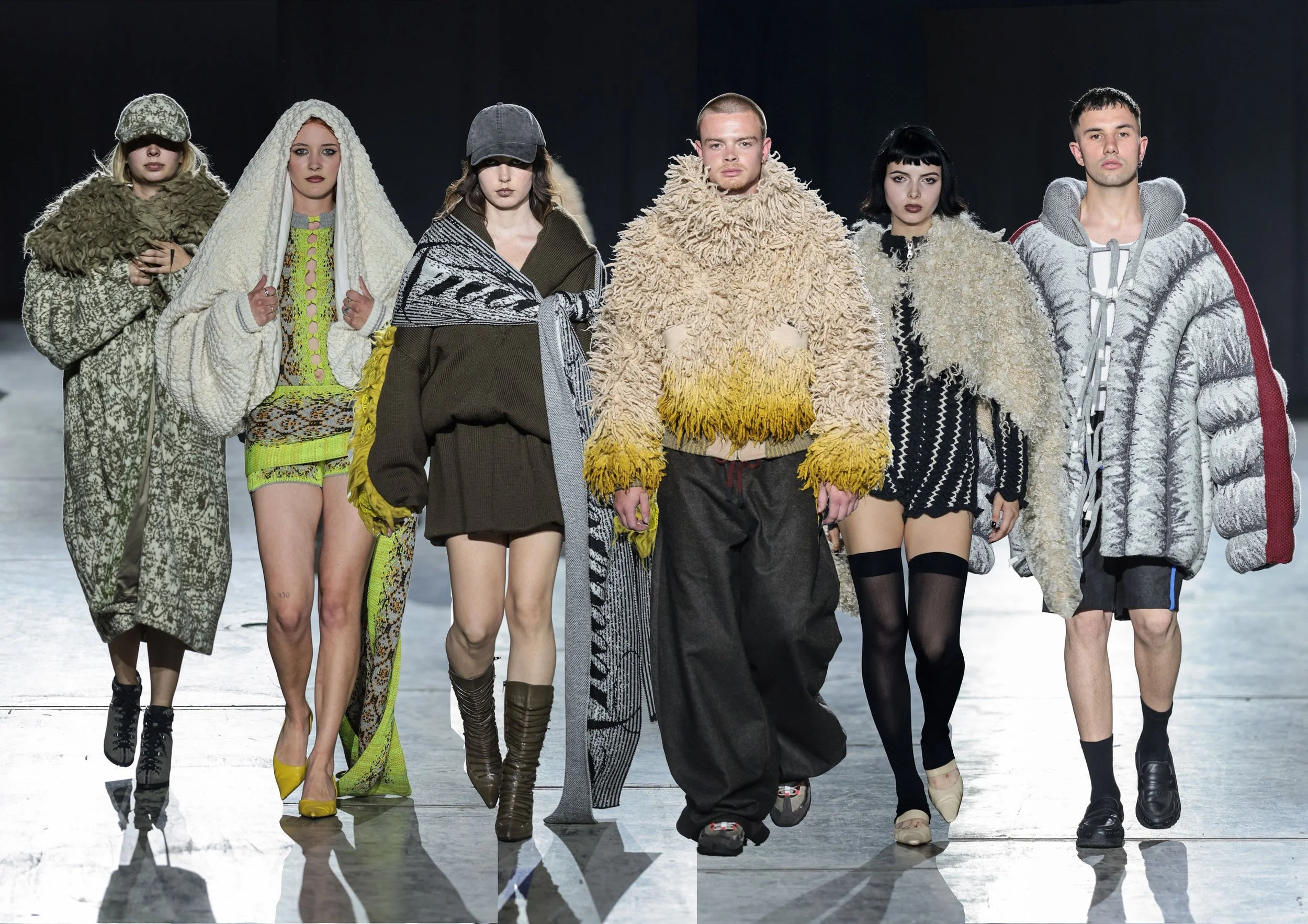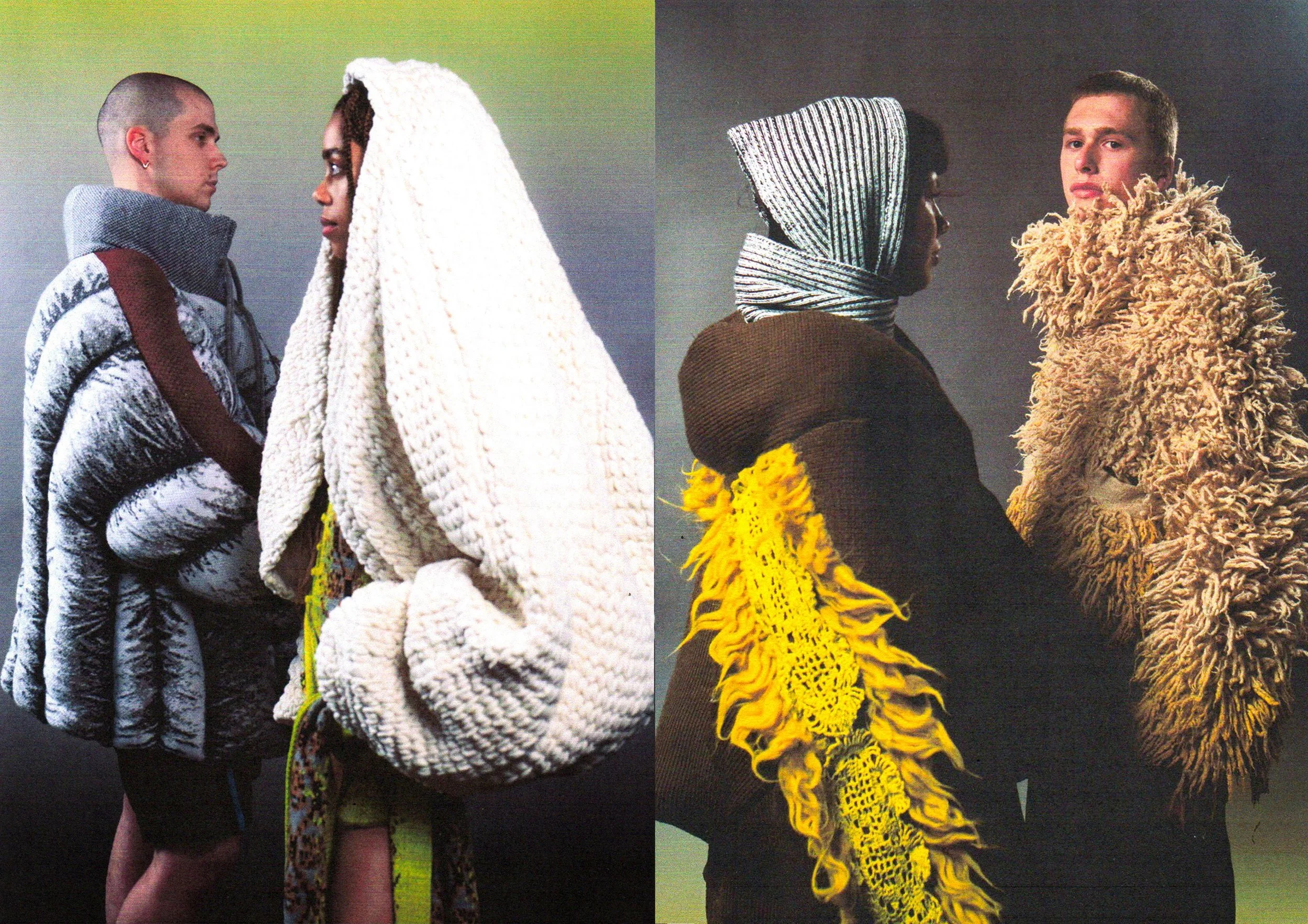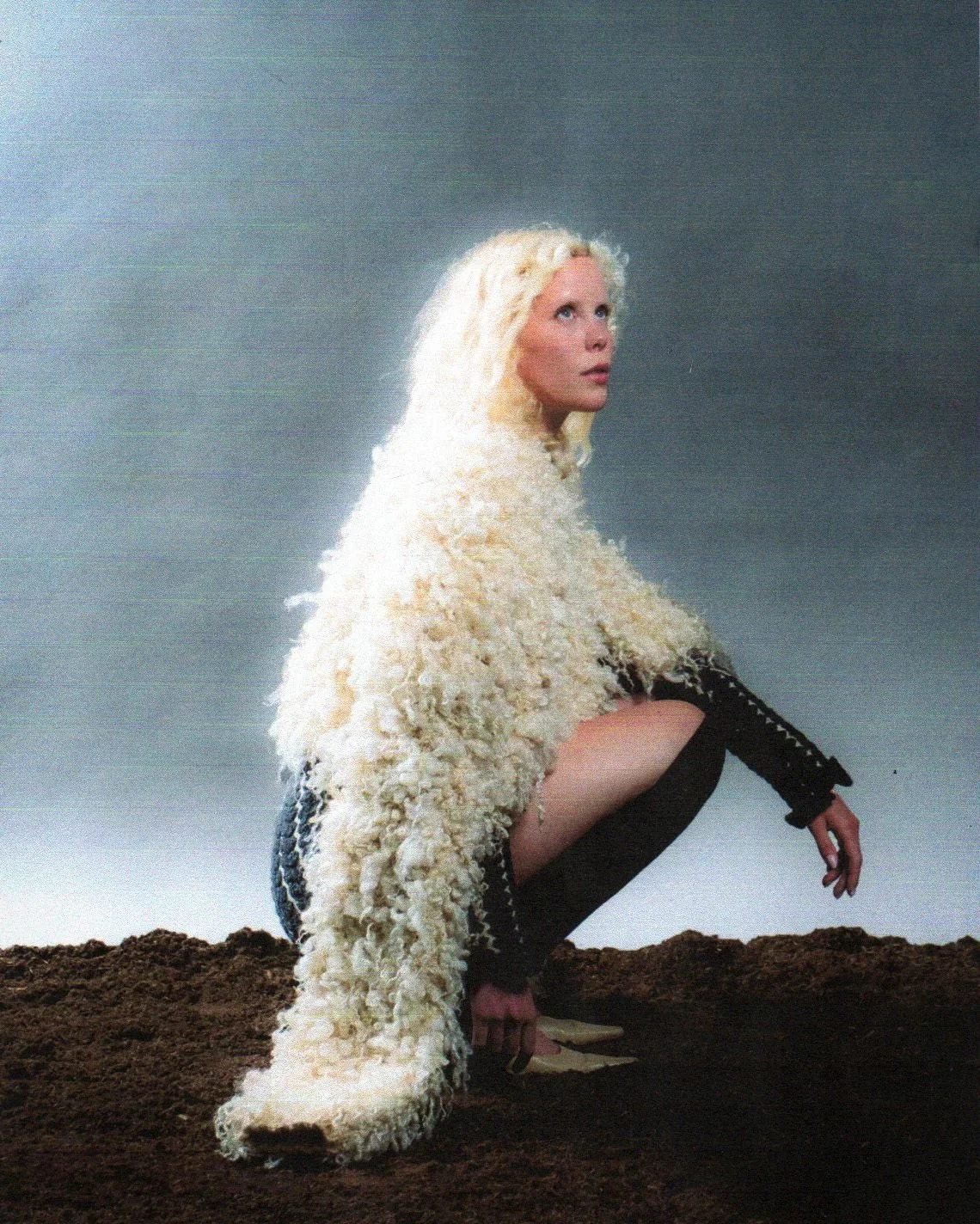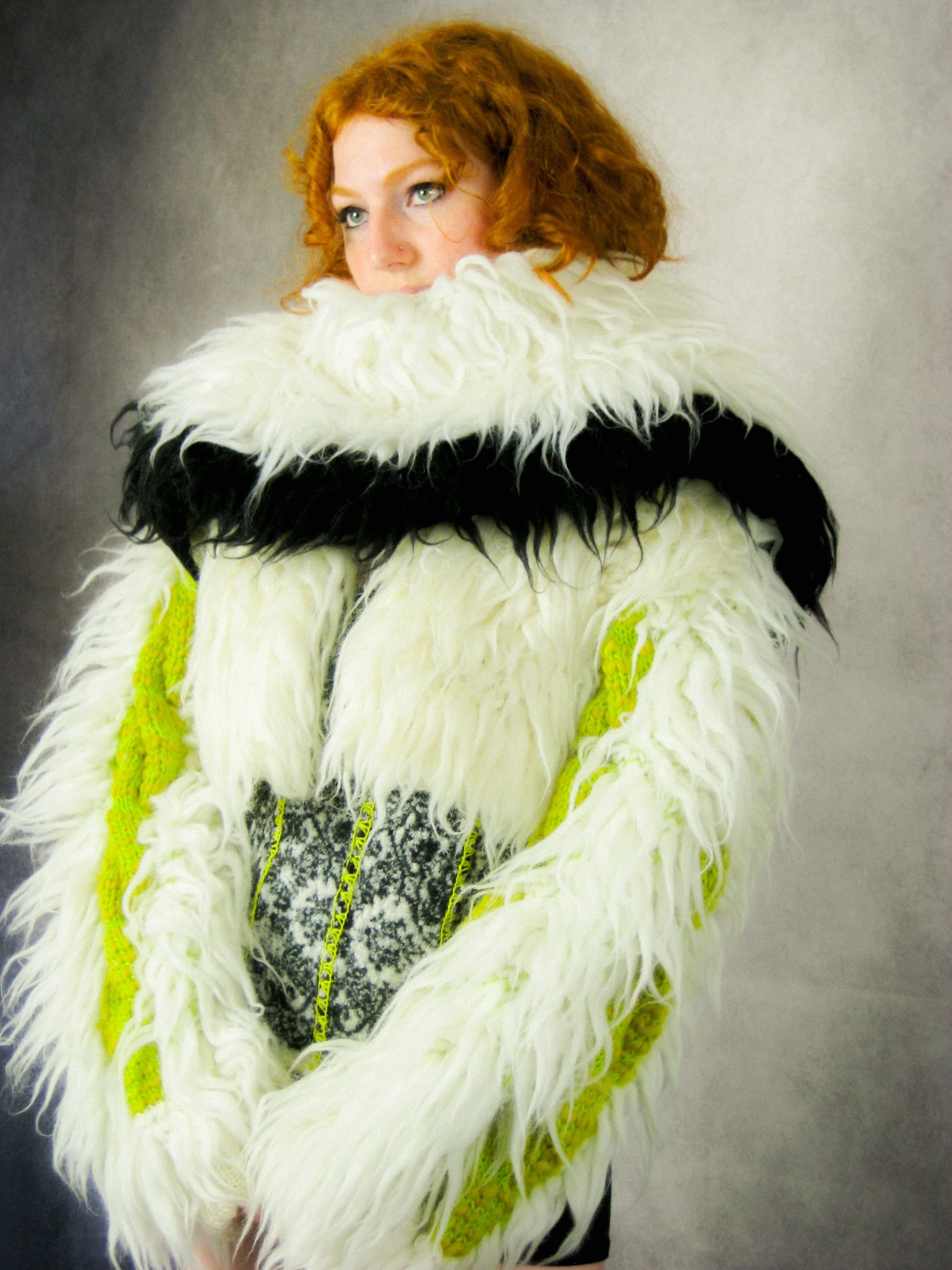Talent Talks: Eva Popa
Image by Peter Stigter
Honouring knitted tradition through innovation, this collection reimagines Romanian craftsmanship. Inspired by the weather-resistant sheepskin coats of Romanian shepherds, Eva Popa blends heritage techniques like hand knitting, crochet and felting with modern industrial knitting technology. Merino wool takes centre stage in Resilient Forms, transformed into functional, sculptural outerwear. By pairing industrial methods with slow, manual processes, the collection reclaims the value of making: a study in resilience, regeneration and craft as quiet resistance.
Could you please introduce yourself?
I’m Eva Popa, a recent graduate of AMFI, where I specialized in knitwear and textile design. I learned to hand-knit from a very young age and quickly developed a deep love for craftsmanship. In my work, I often combine traditional textile techniques with innovative approaches.
Image by Cian Redmond
Having graduated recently, how do you look back on your studies?
The last two years of my studies were definitely the ones I enjoyed the most. That’s when I really focused on knitwear and textiles, and I could dive deeper into the things I love. I spent a lot of time experimenting with techniques, learning to use domestic knitting machines, and even trying out industrial knitting, which was such a great experience. I always knew I wanted to work with knitwear, but during those years, I really started to shape my own design approach, one that’s very technical, starting from the textiles themselves, the fibers, and always with sustainability in mind.
Could you please tell us something about your graduation collection/project?
The project explores the idea of reintroducing craftsmanship back into our society and how that can help improve our current fashion practices regarding manufacturing, sustainability, and innovation. The sheepskin coats worn by the Romanian shepherds serve as the main source of inspiration and example of how craft can create a weather-resistant and functional garment, all while using natural materials. By analyzing some of the traditional Romanian coats, the project looks at techniques such as knitting and the properties of wools to find better solutions for today. The main focus of the collection was the development of a knitted outerwear line. By delving into the evolution of this protective layer, “Resilient Forms” draws a parallel between the traditional coats and their modern counterpart, the oversized puffer jacket, highlighting the difference in materials and practices. The garments adopt a slower, more sustainable approach to contemporary silhouettes, resulting in a durable and functional outerwear collection that thoughtfully highlights craftsmanship.
Image by Cian Redmond
Which materials, techniques, programmes and/or applications are you mostly interestedin? Please specify your use and views on wool
Almost all of my garments are made out of wool, specifically merino, which I’m honestly a bit obsessed with. I wanted to make the most of this fiber and its natural properties, like durability and water resistance, and apply them to modern outerwear.
The goal was to develop a series of textiles that address contemporary needs. Each technique highlights craftsmanship functionally; for example, felting becomes a waterproof layer, crochet ornaments, patches that reinforce garments, and hand knitting, a new alternative to fur.
While many of my techniques are rooted in traditional practices, in recent years I’ve become very interested in industrial knitting. I learned how to program and work with Shima Seiki machines, including the very complex Whole Garment machine. I really enjoy bringing this knowledge into my garments, mixing more analogue, hands-on techniques with advanced technology.
The exhibition you are a part of looks into the meaning of regeneration. What does regeneration mean to you and your work?
While researching Romanian coats, I was really inspired by the people making them in the countryside. Their attention to detail and care for craftsmanship and the goal to create garments to last generations and protect shepherds on their journeys really spoke to me. I wanted to bring that same mindset into our society, rather than letting these techniques disappear. For me, regeneration is about looking back at the past and finding solutions for the future, exploring old traditions and adapting them to today’s needs.
Image by Alexia Popa
How do you perceive the meaning and importance of community within the fashionfield?
During my graduation collection, I spent almost all of my time in the knitting room with the other students, and it really felt like a community. We spent every day together, listening to music, watching movies, helping each other, and we became really good friends. That made the whole semester so much easier and showed me how important a positive atmosphere is. For me, community in fashion is more than just making clothes. I really enjoy working with other people, such as photographers, videographers, stylists, or even meeting people searching for fibers, and I think these collaborations make projects stronger and sometimes take them in unexpected directions.
How do you view the future of fashion? And your own role therein?
I see the future of fashion moving toward more thoughtful, sustainable practices, where the focus is on creating pieces that last and respecting the people, materials, and techniques behind them. For my own role, I know I will always keep knitting and creating textiles that can become solutions for the future. I don’t see myself just designing; I want to stay involved in the process of making each piece. My twin sister, Alexia, who is also a designer and equally obsessed with knitting, and I are starting our own brand, where we aim to create pieces that celebrate the process, focus on craftsmanship, and are built to last, moving away from trends but instead focusing on innovative textiles and sustainability.



